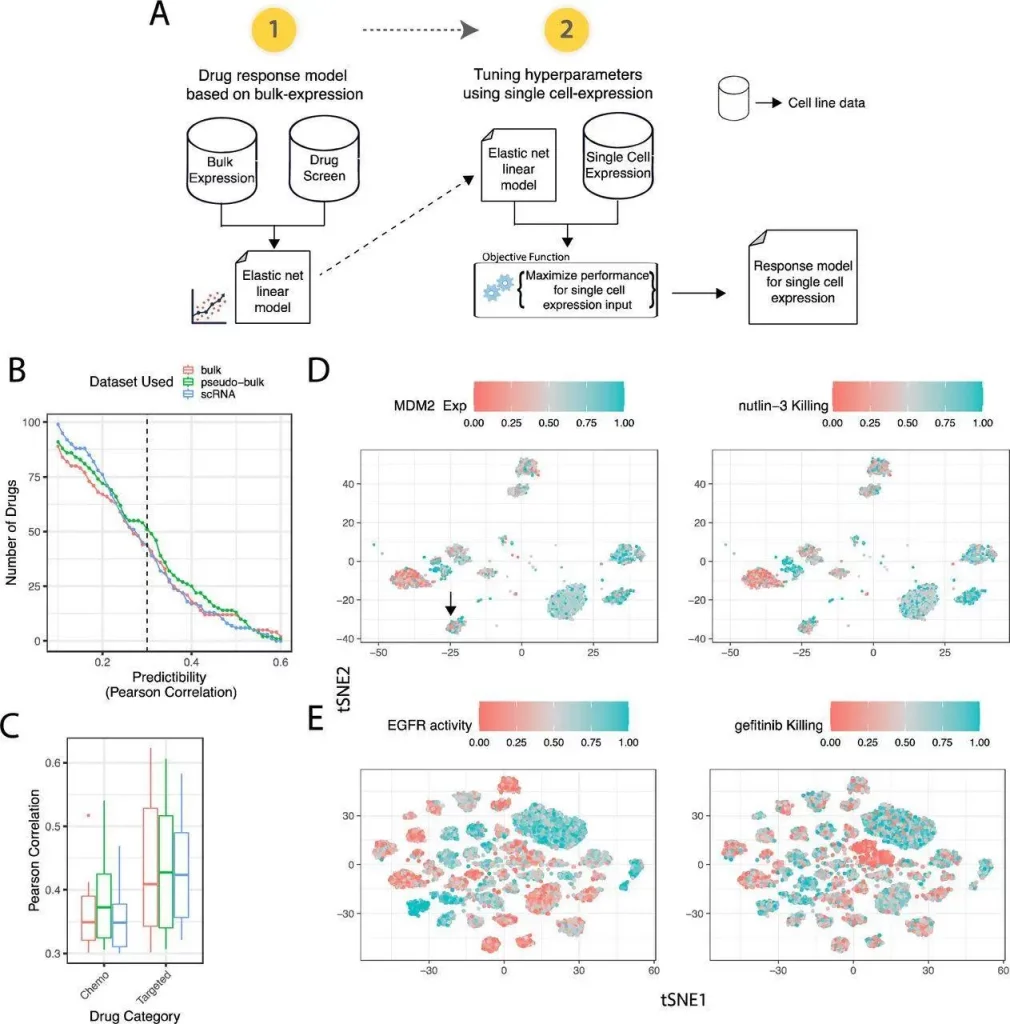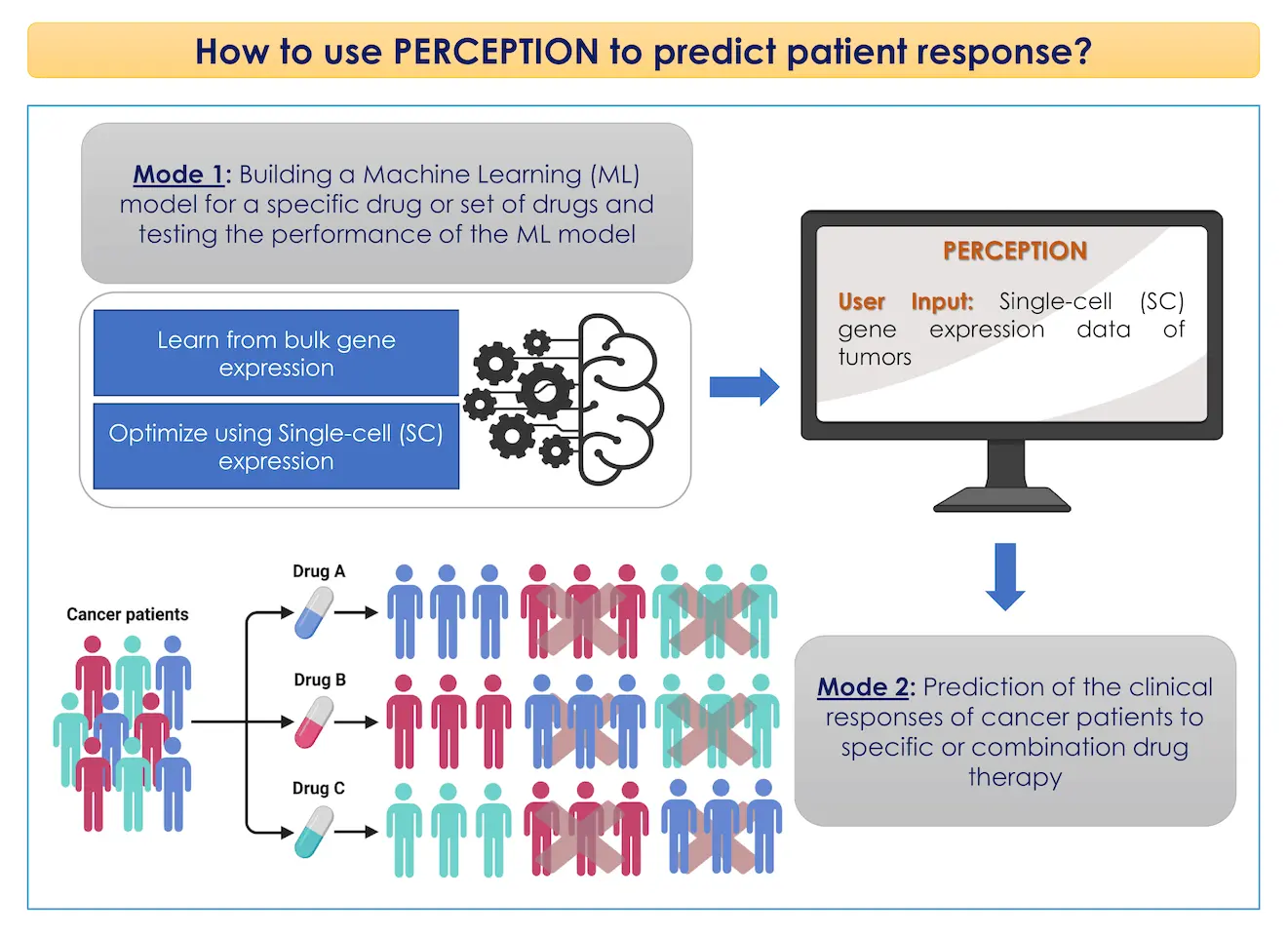Suppose there was a world in which your doctor could not just see how large and where your tumor is but also know the language spoken by its cells. What if instead of just seeing how big or where it is, your physician could hear this orchestra of gene activity? This symphony would predict how your body will react to treatment and even give warnings before resistance. PERCEPTION is a groundbreaking computational pipeline that uncovers why some people respond well to drug therapy while others develop resistance. It does this by looking into single-cell expression in tumors.
What’s the Big Deal About Single Cells?
Traditionally, studying tumors involved working with them as conglomerates, much like hearing multiple conversations in one noisy room without being focused on any particular voice. This misconception is shattered by single-cell transcriptomics, which enables scientists to zoom in on each cell’s gene expression levels within a tumor, thereby revealing an unseen diversity.
Think of a tumor as a battlefield. Some of the soldier cells may be actively fighting, whereas others are in a state of dormancy, waiting for the right time to strike. These differences and their respective gene expression patterns can be discerned through PERCEPTION using single-cell analysis.
PERCEPTION: How It Is Constructed
PERCEPTION’s training process is as follows:
Step 1: Learning the Basics: Initial training involves using large data sets from various cell lines for several cancers that were treated by scientists with different drugs and their responses monitored (sensitive, resistant, etc). This helps PERCEPTION to know how gene expression patterns at the level of bulk cells (all cells taken together) translate into drug response.
Step 2: Refining the Art: Next, PERCEPTION becomes more advanced. In this scenario, however, it employs single-cell transcriptomics data obtained from the same cancer cell lines. By matching individual cells’ gene expressions along with corresponding drug responses, there will be awareness of slight differences within the tumor microenvironment, which could influence therapy outcomes.
From Training to Treatment Prediction
Now, imagine a cancer patient. This is where PERCEPTION jumps in by examining unique transcriptomes of individual cells from such tumors. As a result, PERCEPTION could forecast the likeliest reaction of that person’s tumor to different possible treatments, including both single drugs as well as combinations.

The Power of PERCEPTION in Action
Research on PERCEPTION is encouraging. It outperforms other ways of predicting therapy outcomes associated with breast cancer, multiple myeloma, and lung cancer.
Some Highlights about PERCEPTION:
- Identifying Responders to Combination Therapy: During clinical trials involving multiple myeloma and breast cancer patients, PERCEPTION correctly predicted which patients would derive benefit from specific drug combinations based on the single-cell make-up of their tumors.
- Unmasking Resistance Before it Strikes: Tumor samples from lung cancer patients during treatment were subjected to PERCEPTION, and gene expression patterns indicative of drug resistance were identified. This implies that doctors may have to consider this information in advance when planning for adequate treatment interventions before the onset of resistance.
PERCEPTION is still leading the way in individualized therapy for cancer, but there is more work to be done.
- Beyond Cell Lines: Currently, most models are mainly based on tumor cell lines, which may not perfectly reproduce all aspects of a patient’s tumor. This will require incorporating information about actual patient tumors into PERCEPTION to improve modeling.
- The Immune System’s Role: Cancer does not function alone, as the immune system is involved. Incorporating data regarding immune cell activities within the microenvironment of a tumor could potentially completely change how PERCEPTION understands it.
Breakthrough for Treating Cancer: The Single-cell Era
Given the fascinating possibilities of PERCEPTION and single-cell transcriptomics, this is just a glimpse of what one could do. Here are a few places where it may come in handy:
Interactive Exploration
Just imagine an interactive system that allows you to tour your cancer’s genetic landscape right from your computer along with your doctor! With this platform:
- Visualize Different Cell Types: Different cell types can be observed in one tumor, which might have distinct gene expression patterns.
- Simulate Treatment Responses: Test drugs by behaving them in various ways on computers; this is based on the unique cellular composition of tumors.
Precision Drug Development:
By profiling the single-cell transcriptomes of tumors with known resistance mechanisms, one can gain insight into how these cancers ultimately become resistant. In this regard, it could:
Design New Drugs: Generate medications specifically targeting inherent vulnerabilities related to resistant cell populations.
Optimize Treatment Combinations: Make stronger combinations of drugs that can overcome resistance pathways.
Unveiling the Gray Areas:
Cancer is a complicated maze, and single-cell analysis can reveal the gray areas where nothing seems clear cut. For example, a tumor may have both responsive cells and resistant cells in it. In other words, doctors could use PERCEPTION to identify such patients and plan treatments that will affect both groups of people.
The Promising Future
Nevertheless, there is a bright future for cancer treatment through single-cell analysis. Here’s what we can anticipate:
- Better PERCEPTION Models: As more data accumulates and the methodologies are refined, PERCEPTION will further enhance its forecasting ability and reliability.
- Expanded Clinical Utilization: A straightforward inclusion of PERCEPTION as well as similar single-cell technologies into routine oncologist workflows.
- Patient Empowerment: Patients may better understand their cancers and become more active in their treatment choices.
A journey has begun towards personalized cancer care where single cells could be potentially therapeutic. This revolution promises improved patient outcomes and a better understanding of cancer itself. Keep an eye on this space as it heralds the advent of a new era in cancer research and cure.
Article Source: Reference Paper (Abstract) | Full Paper on bioRxiv | Reference Article | PERCEPTION is accessible on GitHub.
Follow Us!
Learn More:
Anchal is a consulting scientific writing intern at CBIRT with a passion for bioinformatics and its miracles. She is pursuing an MTech in Bioinformatics from Delhi Technological University, Delhi. Through engaging prose, she invites readers to explore the captivating world of bioinformatics, showcasing its groundbreaking contributions to understanding the mysteries of life. Besides science, she enjoys reading and painting.
















